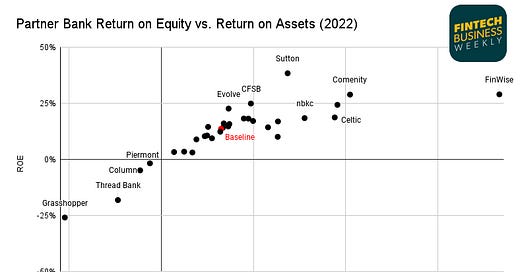BaaS Is No Silver Bullet for Community Banks, De Novos, Analysis Shows
Affirm Hit By Rising Cost of Funds, Loan Loss Provisions; TAB Gets "Needs to Improve" on CRA
Hey all, Jason here.
It’s just 10 days until the Banking Renaissance 2023 event here in Amsterdam. I’m looking forward to joining industry stalwarts like Brett King, Jim Marous, Paolo Sironi, Chris Skinner, and numerous others for several days of discussion and networking. If you plan on attending, give me a shout so we can make sure to catch up that wee…



